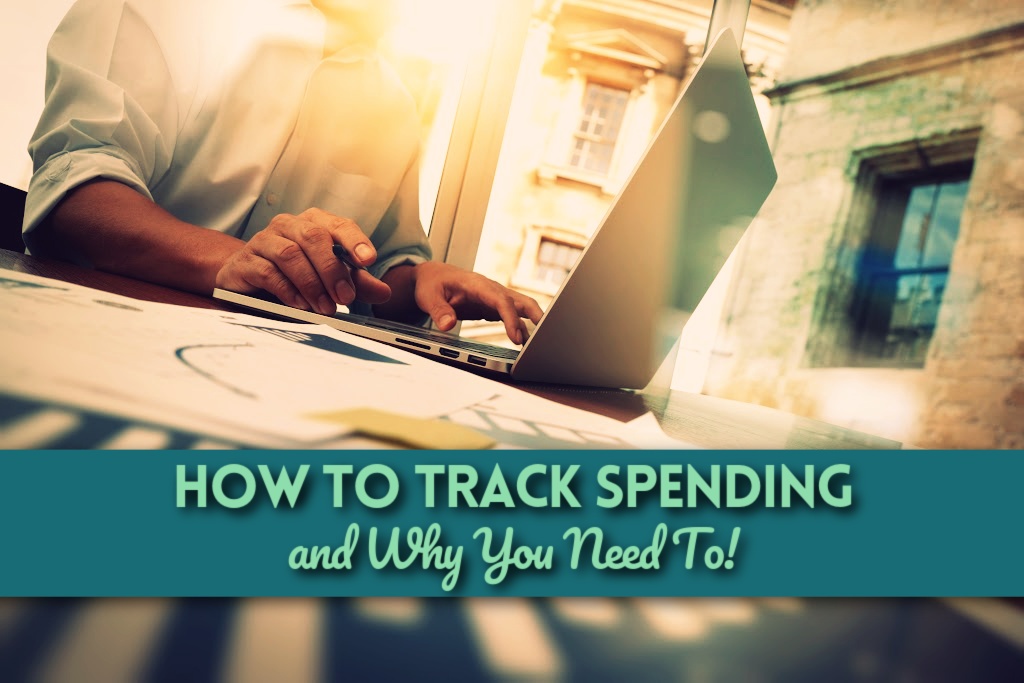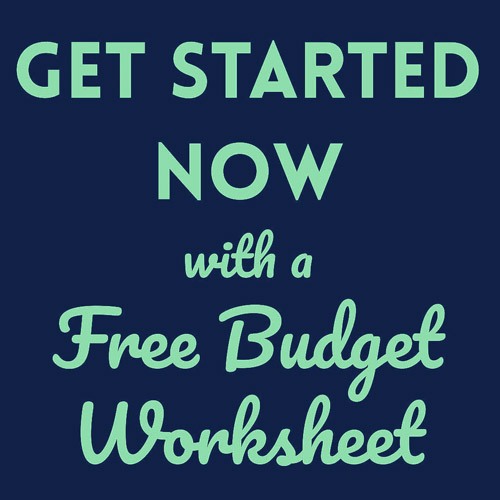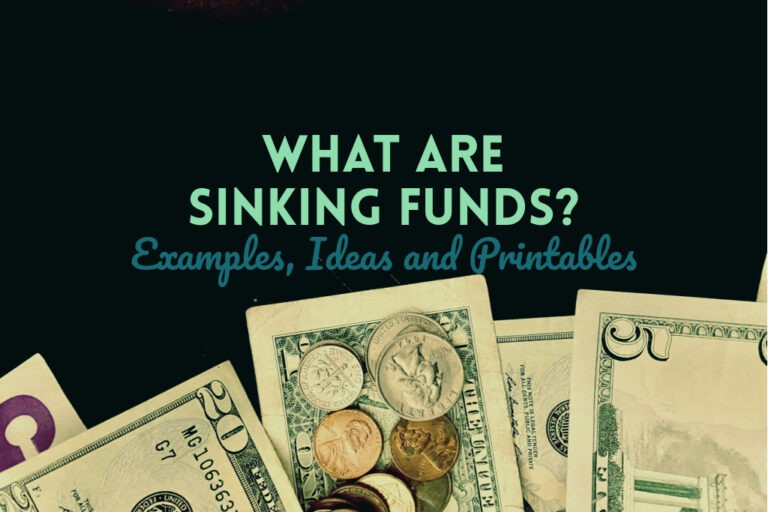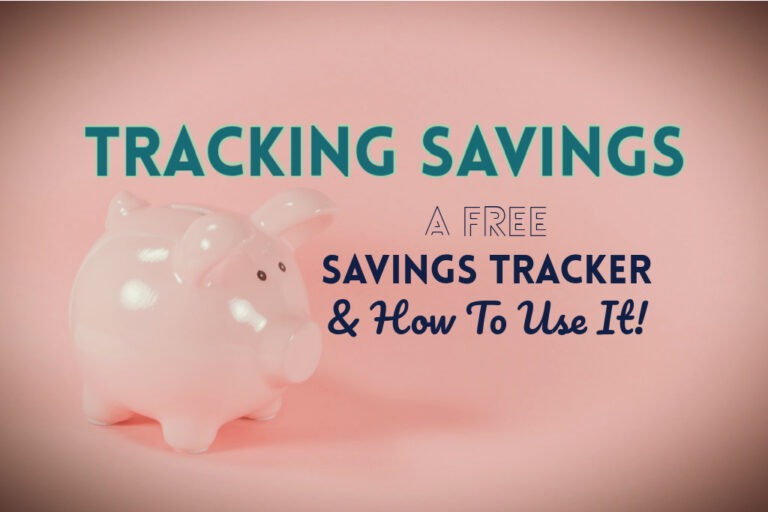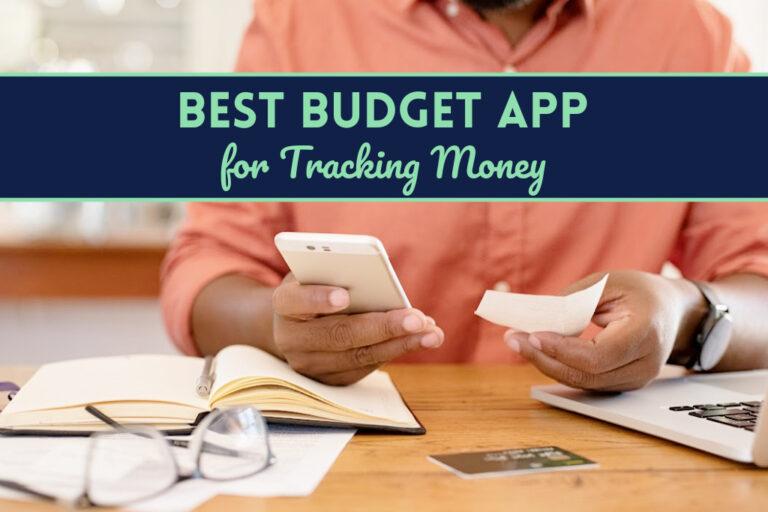Some of the links on this site are Affiliate Links and if you use them to make a purchase, we may earn a commission. For more information, read our Disclosure Policy.
At the end of the month, do you wonder where your money has gone? When you get your credit card bill are you shocked by the balance? Is your wallet constantly empty, even though you were just at the ATM? If you are nodding your head yes, then you need to track spending – and you need to start now!
I know how difficult it can be to keep track of money. For a long time, I was wishy-washy about budgeting and spending, which – let’s face it – is not how anyone should handle their finances. However, when I buckled down and decided to track my expenses, dealing with my money became so much easier. So much easier.
Sure, it takes some time and a little bit of effort to learn how to track your money – but the benefits are instantaneous! With my tips for how to keep track of your expenses, you will be one step closer to reaching your financial goals.

Reasons to Track Spending
Where does your money go? Seemingly insignificant purchases are quickly forgotten, but they most certainly add up at the end of the month. When you track expenses, you get ahead of the curve and stay on top of your financials. I guarantee you, at the end of the month, you will experience fewer surprises…and will likely end up with more money in your account, too.
There are a whole host of benefits of tracking your expenses, so I’m going to highlight a few of the best.
Spending Tracking Reveals Habits
The number one reason why you should keep track of money spent is to learn your spending habits. Too often, we have no clue how much we spend or what we spend it on. Often it is an oversight, but sometimes we outright lie to ourselves. When you track spending habits, it reveals the truth…and it can be eye-opening.
Do you know how much you spend eating out every month? Are you aware of the monthly dollar amount you spend on clothes?
Keeping track of expenses makes it very clear. The figures provide irrefutable evidence. When you commit to keeping track of spending, the tallied numbers show you exactly what you spend your money on…and how much you spend.
Tracking Money Helps to Keep an Accurate Budget
I’m a big believer in keeping a monthly budget – and when you track monthly spending, you will ensure that your budget is as precise as it can be.
A detailed and accurate budget not only helps you keep on track with your income and expenditures for the current month, but it can be extremely useful when making future budgets, too – which is so important if you have big savings goals.
With a thorough budget, you can analyze your month-over-month and year-over-year budgets – which will make planning future budgets a cinch!
Download a Free Budget Printable to get started on your budget today!
Expenses Tracking Shows You Where You Can Make Changes
One of the top reasons you should learn how to keep track of your spending is that you can better identify where you can make changes in your budget. Believe me, it’s not always obvious.
For example, it is highly touted that the best way to cut down on spending is to kick the coffee habit. While I agree that it is solid advice for anyone trying to save money, you won’t actually know the impact those coffee drinks are having on your finances until you start tracking daily expenses.
When I started to track my spending, it became glaringly obvious where I could make small changes that could add up to big savings. My once-in-awhile chai lattes were not the big offender; it was my pricey weekday lunches.
Cutting just one restaurant lunch from my weekly expenditures resulted in far more savings than foregoing a beverage treat from the coffeeshop. (However, when I really got serious about savings, I cut the coffeeshop drinks!).
Can Help You Control Spending
Keeping track of money is a beneficial way to control your spending, too.
The very act of tracking your expenditures makes you more aware of your spending. When you are more aware, you make better spending decisions.
Being conscious of your expenditures and recording how much money you spend makes it a lot more difficult to carelessly spend money. As a matter of fact, if you are trying to stop overspending, then tracking your expenditures is essential!
Allows You to See Your Progress
One of the best benefits of keeping track of expenses is that it gives you a platform to watch your progress. The information gleaned from tracking your expenditures is so powerful that it will motivate you to reach your goals.
When you track you spending each day – and include absolutely everything you spend money on – you can easily do calculations to find out how much you spend in a week and a month.
With some quick math, you can also find out your average daily expenditures, your average weekly spending and how much on average you spend a month. All of these monetary figures will show you where you have been and encourage you to get to where you want to be.
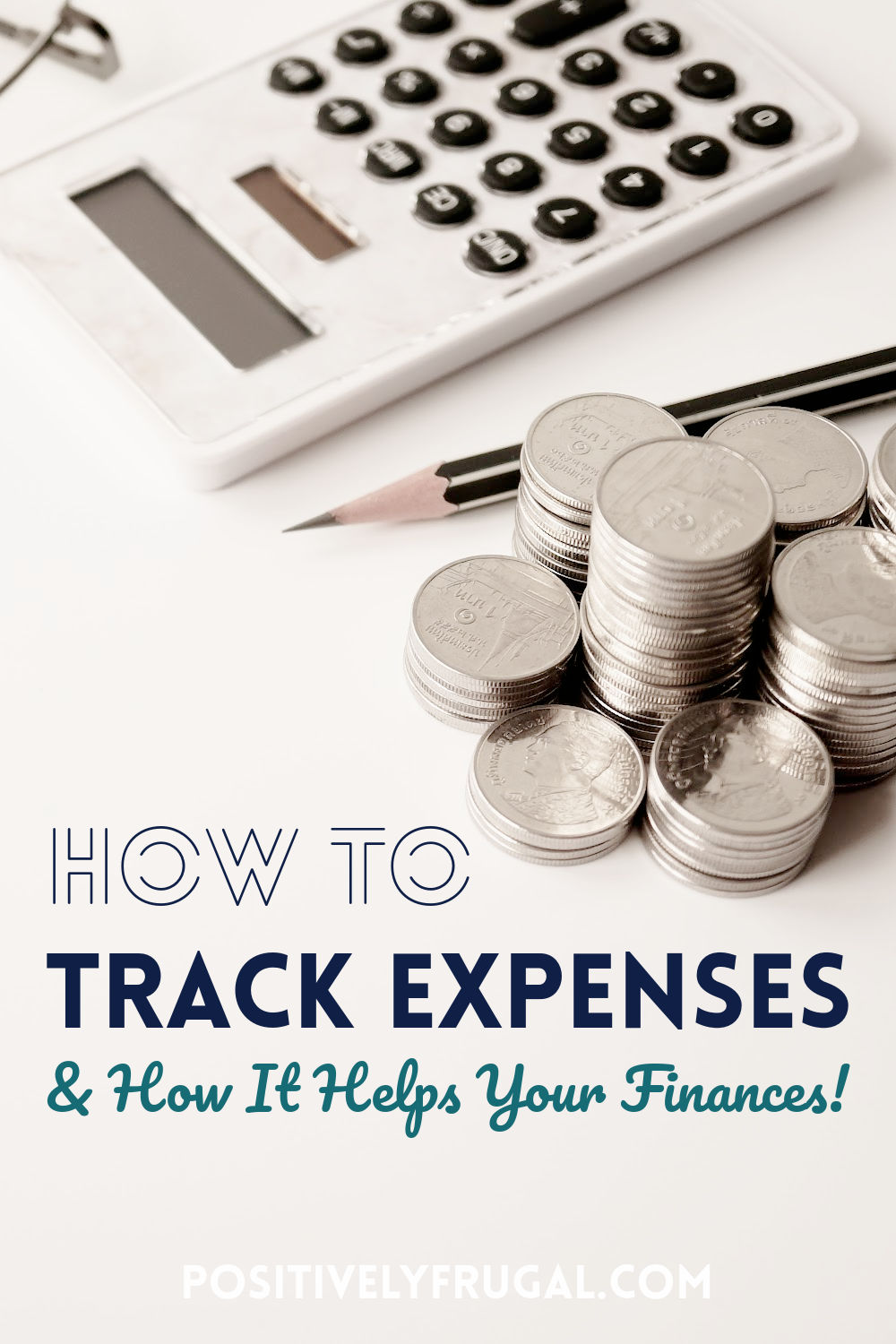
4 Ways to Track Spending
Now that you know some of the key benefits of tracking expenses, let’s talk about the specifics of how to keep track of money. There are multiple methods – from old school ledgers to tech-savvy apps to keep track of expenses. Tracking money is not a one-size-fits-all process; you need to find the best way to track money that works for you!
#1 How to Track Expenses with a Ledger
For many people, keeping a ledger of expenditures is the best way to track spending.
Using pen and paper might be old-fashioned, but it’s a tried-and-true method that works. How to track spending on paper is very simplistic. On each line, write down the date, what you bought, what category it goes into and how much you spent. Simple as that!
You can use a spiral notebook, an official ledger or a Bullet Journal Spending Book.
That said, you do not need a book to keep track of spending; you can create your own (much more affordable) budget binder. My downloadable printables for budgeting include a specific Expense tracker printable, plus everything else you need for how to keep track of your money in a notebook.
#2 How To Track Spending with Envelopes
Another one of the best ways to track spending is with the Cash Envelope Budget System. It is a very tangible method for how to monitor expenses.
How to track your spending and budget with envelopes is a little more involved than tracking with pen and paper, but it is not complicated. The key to how to keep track of your monthly expenses with envelopes is that you commit to a complete cash spending system…and you self-impose spending limits.
First, you need your envelopes and to determine your expense categories (housing, utilities, grocery food, eating out, entertainment, etc.). Then, set spending limits for each category based on your overall income and budget goals. Once a month (or once a week) fill each categorized envelope with the set amount of cash you are limiting yourself to spend.
During the month (or week), use cash to pay for your expenses from the categorized envelopes. If you completely empty an envelope, you can no longer spend money on that category for the remainder of the month (or week). With each expenditure, use a budget sheet to track amounts or collect receipts as you go.
#3 How To Track Your Spending with Excel (or Google Sheets)
I personally track spending in Excel – and I think it is the best way to track expenses. With a Track Spending spreadsheet, it is easy to calculate totals (the spreadsheet does the math for you!). Plus, an Excel spreadsheet to track spending is clear to read, can be reorganized and is easy to print.
Just like the other methods of how to manage your expenses, to track your spending in a spreadsheet, you will first need to create categories. Every day, enter your expenditures into your Keeping Track of Expenses spreadsheet.
Use the formula functions to add up daily spending – then use those figures (and the spreadsheet formulas) to calculate weekly and monthly spending totals – as well as averages.
You can create a custom spreadsheet – or use one of the templates to manage monthly expenses.
There are three reasons that I think spreadsheets are the best way to keep track of expenses. First, they are incredibly personal; you have complete control to be as robust or as basic as you want. The information can so easily be calculated; just use the formulas. Best yet, you can adjust your spreadsheet as needed; simply add or delete categories and make corrections when needed.
#4 Using Apps to Track Spending
If the first three methods seem a little antiquated to you and you are wondering how to keep track of spending in the digital age, then consider a Keep Track of Money App.
A Track Spending app can be a very handy way to track and budget spending. The best apps for tracking spending offer an easy, hands-off approach to your finances (which is why I don’t necessarily think they are the best…and I get more into that in a minute!).
Mint App
Often hailed as the best app to track spending, Mint is a one-stop-app for your finances. The expense tracking app connects your bank accounts, credit cards and loans, categorizes your transactions automatically and even allows you to set budgets and savings goals. Other features are access to your credit score, reminders to pay upcoming bills and a calculation of your net worth (one of the important Money Numbers you should know!).
While it is a free app to track spending, it does display advertisements.
YNAB (You Need A Budget) App
A much more complex app, YNAB is actually an app for how to track your budget, not just your spending. One of the key focus areas of the app is creating your Zero Budget, where every dollar goes toward something (be it current bills, debt repayment or savings).
While I love that the budget tracking app requires more personal involvement, it is a little intense for someone who just wants to track daily spending. There is a free trial period to try YNAB, but it costs after the initial month.
EveryDollar App
The EveryDollar app is a budget app that features the Dave Ramsey spending plan, budgeting program and his Baby Steps approach that he outlines in his book, Total Money Makeover. Like the YNAB app, EveryDollar uses a zero-based budget at the core of the app – so it is much more than a way to track expenses.
The basic app – which requires some manual data entry – is absolutely free, while the upgraded version is a paid app.
Are Apps to Keep Track of Spending Right for You?
While apps to help track spending are great for informational purposes, I do not think they are the best money tracking method for personal finance.
I know. Apps are an easy way to track spending, but hear me out on this one. If you solely are interested in seeing where you spend your money, then a Keep Track of Spending app is a great tool. However, if you are tracking your funds in an effort to save more money, to become more frugal or are trying to change your relationship with money in order to secure a better financial future, then you likely need a more hands-on approach.
Of course, using apps might be one of the easiest ways to track your spending; they are also require the least amount of effort and concentration on your part. However, the easiest way to track spending is not necessarily the best.
The entire point of keeping track of money spent is to bring your spending habits to light. The more involved you are, the more you will benefit from the process.
If you are intent on using an app, rather than a more involved approach, I recommend checking out a few different options in the app store to find the best personal expense tracker app for your needs.
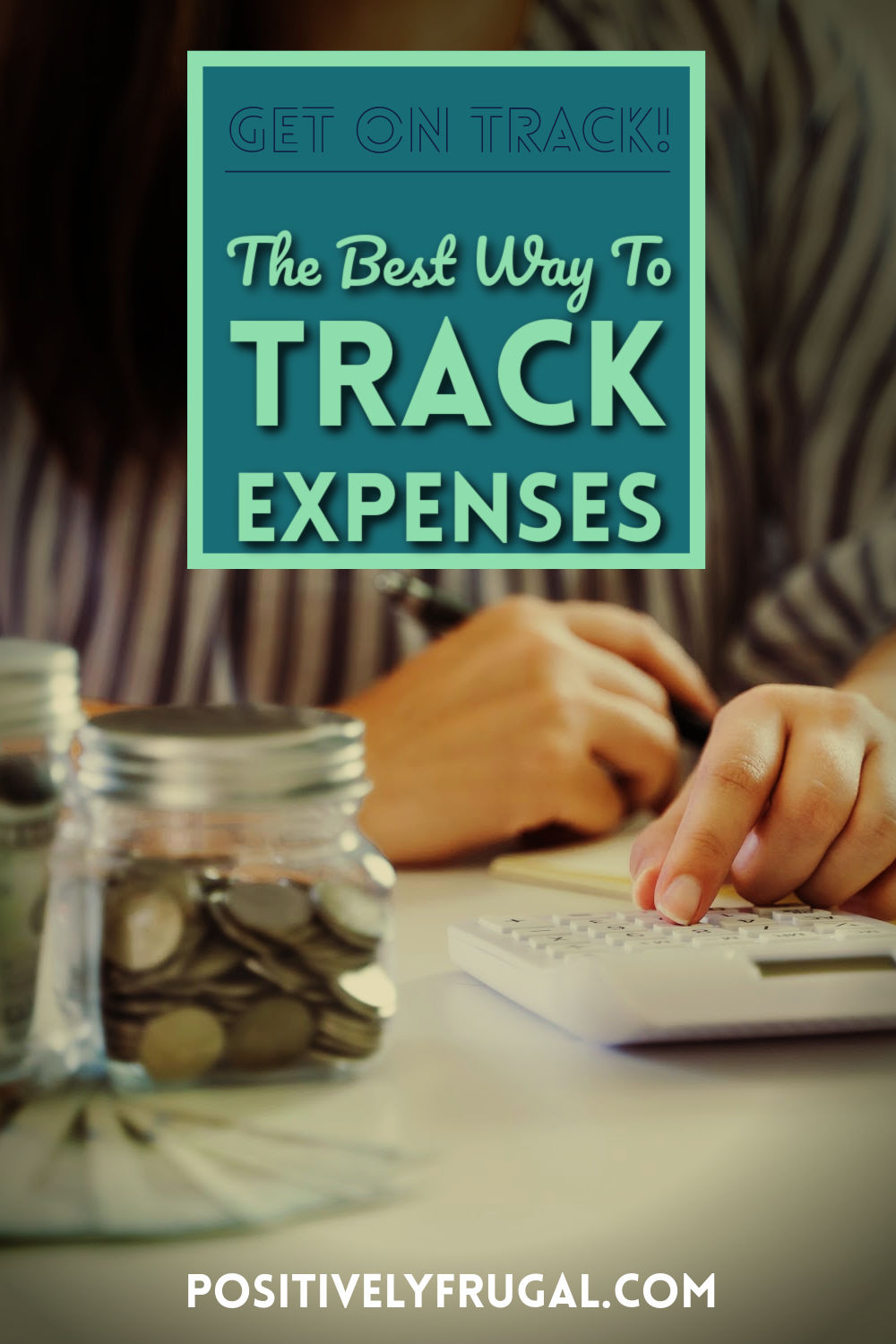
Tips to Keep Track of Spending
We have talked about why you need to track finances and different ways to track spending, but I have a few more tips that will help you create a process that works best for you.
Track Your Daily Spending
Want to know the best way to track monthly expenses? Track daily spending! Do it. Every. Single. Day.
Seriously, tally up all of your expenditures each and every day; it will only take a few minutes. You can do it at night, but I think the following morning is the best time. Add it to your morning routine so you don’t forget.
There are two good reasons why you want to track your expenses daily. First, it is much easier to reconcile what you spent yesterday than trying to settle what you spent last week or earlier in the month.
Second, it keeps your spending on track throughout the week and month. Looking at the day-by-day totals in your daily spending log will point out spending issues before they become problems.
Track Your Spending with Receipts, Statements and Notes
A key component to how to track your finances is logging every single monetary transaction into some version of a Track Your Spending Worksheet. It doesn’t matter if you use a ledger, envelopes or keep track of spending on Excel, you need to first gather the detailed information to input into your log.
Using an app to track daily spending may log the information for you – but you will still need to remember to manually enter your cold hard cash spending details into the expense tracker apps.
There are several ways you can collect the data needed for your expense tracking.
Receipts
Collecting receipts throughout the day is an ideal way to account for all of your spending for a particular day. If you buy something from a vendor that does not provide a receipt (or if you purchase something online), just write the amount on a slip of paper or small memo pad in place of the receipt. Keep your receipts in your wallet or an envelope in your purse.
Statements
If your spending is almost exclusively via credit card or debit card, then you can find a list of your daily expenditures on your online account or through your credit card app.
Just be sure to stay on track with transferring the information to your expenditure log daily – and choose a method to account for any cash spending.
Notes
Personally, I keep a running list of expenditures in the Notes app on my device. Any time I spend any money at all, I open the app and register the expenditure in the list. I find it to be easiest – because regardless of whether I’m paying with cash, credit or debit, I add it to my list. Plus, I can include additional notes or details about the expenditure.
Account for Every Cent when You Track Your Expenses
When it comes to how to track personal expenses, I recommend including every last dollar, every last cent you spend. To me, it just seems like you are cheating if you don’t include all of your expenses.
The entire point of tracking expenses is to get a crystal-clear picture of how much you spend and what you spend it on. Any omissions in your tracking denies you from fully understanding your finances.
Determine Your Categories for Tracking Spending
Categories are a key element in how to track your expenses – but how many categories to add and how specific to get can be a bit of a conundrum.
The good news is, you get to decide! You have complete control over what categories to include in your spending worksheet.
Personally, I keep track of my money by being very detailed with subcategories in my Notes and then use more limited categories on my money tracking spreadsheet. I share how this works in the example below.
Because tracking spending is very personal, you will have to decide what works best for you…and it may require a little trial and error until you find a method that suits your style.
Get Organized before You Track Your Money
Before you set off on a mission to keep track of money, you need to get your finances organized. If you are keeping track of family finances, make sure everyone is involved in the process.
Once you have an overview of your financial situation, then determine how to track daily expenses.
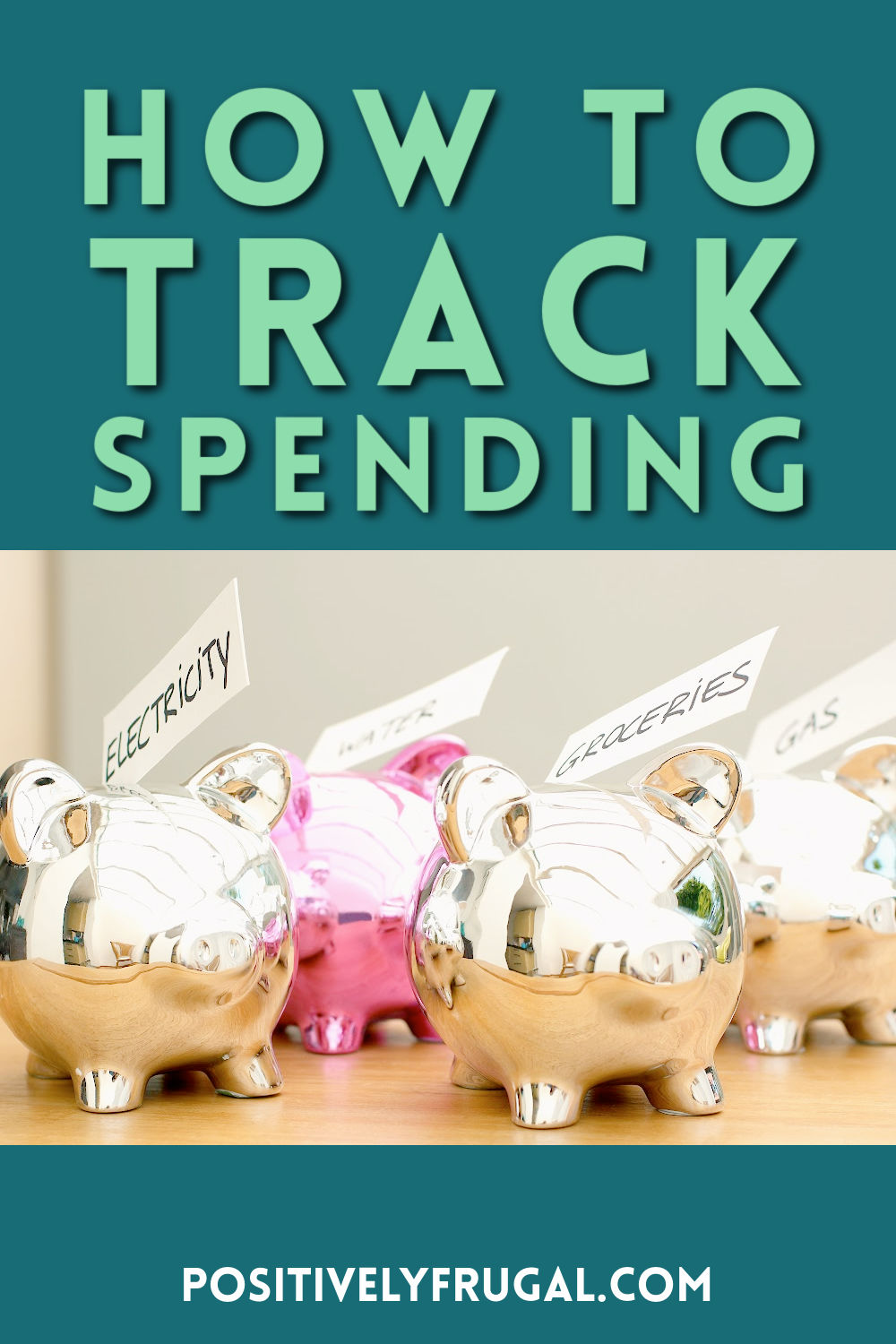
Example of How To Keep Track of Expenses
I have been tracking my spending – every cent I spend – for more than 10 years. The method I use for how to track my expenses won’t work for everyone. You may need to try a few different methods to find the most beneficial way to track your spending based on your own personal preferences.
That said, I’m sharing the process I use for how to track my spending to help give you an idea about how you can get started on your monthly expense tracker.
Okay, so how do I track my spending? I track my expenses daily using a combination of the Notes app on my handheld device and an Excel spreadsheet.
It’s a two-step process that starts the moment I make any purchase or let any of my money pass to someone else.
Track Spending using Notes Daily Log
The first step is to track money as I spend it. As I make purchases throughout the day, each expenditure is logged into my Notes app. I write what I bought and the amount I spent. I try to do this while I am still standing at the register or as I’m walking away.
In my Notes, I write down all the things I spent my money on that day – for example: Gasoline – $23.50, Lunch – $15.50, Parking garage – $2, Water Bill – $24, Movie – $12, Theater snack – $8.
Track Spending in Excel Spreadsheet
The second step of how to track money spending is to input my daily expenditures into an excel spreadsheet.
Each morning, I open my Excel Expense Tracking worksheet and enter the total amount for each of my assigned categories.
Lunch goes under the Food category. In Transportation, I would enter $25.50 (accounting for the combined total of gas and parking). I used to put Water Bill under Utilities, but now it goes under Housing (and I eliminated Utilities).
Both the movie ticket and theater snack go into the Entertainment category for a total of $20, because the food was more for entertainment than sustenance.
On a weekly basis, I reference my online credit card accounts to double-check the amounts and to make sure I didn’t miss any expenses, like auto-payments for monthly services.
At the end of every week, I email my Notes from the app so that I can save them in the same folder as my Excel spending worksheet. That way, I can easily cross-check the info when needed.
Tracking Spending Calculations
What I love about using Excel as a spending tracker is that I can quickly calculate the total spend per day, per week, per month and per year.
I start by sub-totaling the figure for the day. Next, I calculate how much has been spent for the month. I also use a column to calculate the average spent per day for the week and the month.
Furthermore, I use the formulas to add up total expenses for each category for the month and year. I also have a running total of each category since I started tracking spending.
I know, it sounds like a lot and is seems pretty intense, but it is easy once you get into a routine. In fact, now that it is set up, it only takes me a few minutes each day!
That said, regardless of whether it would take me 2 minutes or 20 minutes or 2 hours, tracking expenses is how I keep my spending on track and my budget in check – so any amount of time is worth it!
Interested in more of my Budget and Goal Tips? I round them all up on the Budget & Goals page!


